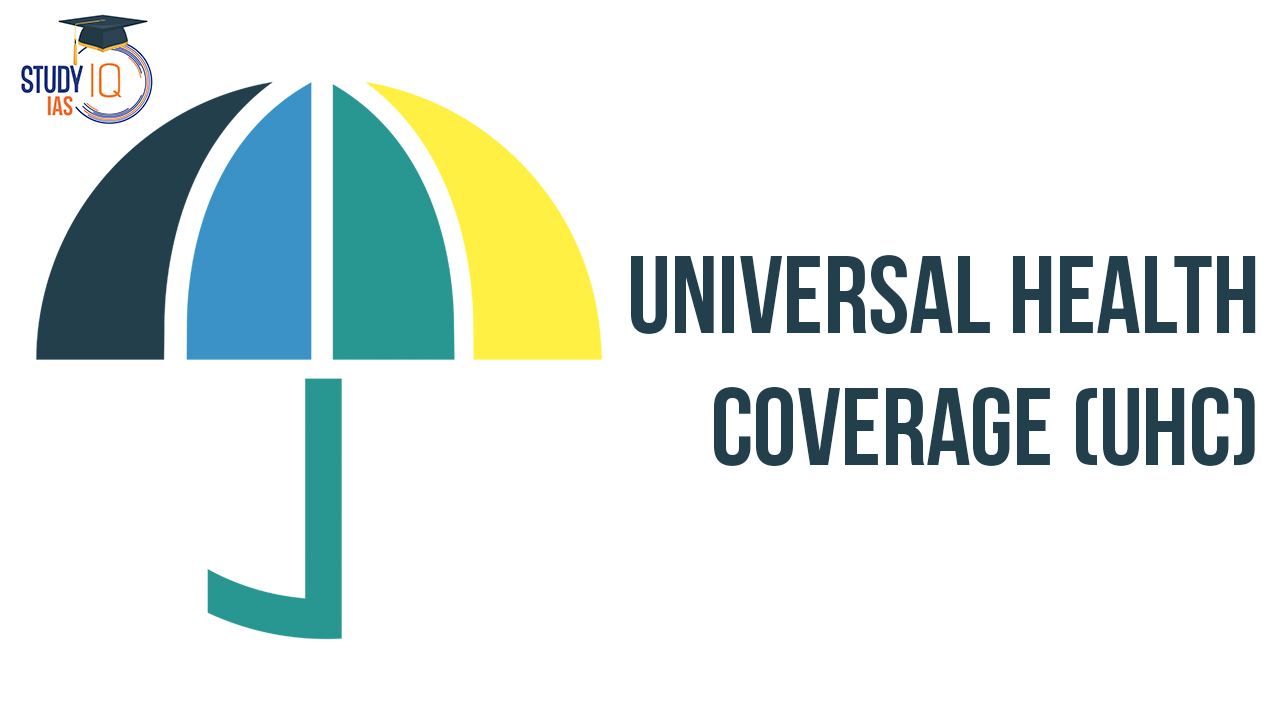Table of Contents
Context: Universal Health Coverage (UHC) is critical for improving public health and economic robustness and plays a pivotal impact in achieving health equality in India.
What is Universal Health Coverage (UHC)?
- Universal access to comprehensive, high-quality health services without financial hardship.
- Covers the entire continuum of care from prevention to treatment and palliative care.
- Key Components:
- Strengthening primary health care
- Reducing out-of-pocket expenditure
- It requires a well-equipped health workforce and strong primary healthcare.
UN Resolution and India’s Commitment
- UN General Assembly resolution (2012) urged countries to progress towards UHC.
- The 2011 high-level expert group report to the Planning Commission aimed to increase public health financing to 2.5% of GDP during the 12th Plan (2012-17).
- India launched National Health Policy, in 2017 aimed at “universal access to good quality health care services”.
Challenges
- Large migrant population: 41 million interstate migrants in 2011,
- 9% migration rate in 2020-21(PLFS 2020-21).
- 49% of the population lives in urban slums (UN-Habitat/World Bank).
- Highlights to ensure availability and accessibility of primary health services.
- Health as a Human Right: No constitutional right to basic health, but Directive Principles provide a base.
- Articles 39(e), 42, and 47 address worker health, working conditions, and public health improvement.
- Panchayats and municipalities have a constitutional duty to strengthen public health (Article 243G).
- Constitutional right to health is critical to break the cycle of poverty and poor health.
| Isaiah Berlin’s Two Types Of Freedom |
|
Suggestions for UHC Implementation
- Address urban migrants’ health needs and informal sector reforms.
- Mobile and portable healthcare access is crucial for migrant populations.
- Simplify reimbursement processes to reduce out-of-pocket expenditures.
- Adapt cash transfers and reimbursements for migrants and marginalised communities.
- Create inclusive health systems.
- Integrate health information systems across public and private systems.
- Address language barriers and urban context complexities.
- Implement community-based primary healthcare with referral systems in urban and peri-urban areas.
- Integrate services at the primary healthcare level for better follow-up and adherence.
| Facts |
| International UHC Day theme (2023): “Health for all: Time for Action” |


 AI and its Regulation in India, Limitati...
AI and its Regulation in India, Limitati...
 Tuberculosis (TB), Symptoms, Causes and ...
Tuberculosis (TB), Symptoms, Causes and ...
 Places in News for UPSC 2025 for Prelims...
Places in News for UPSC 2025 for Prelims...





















